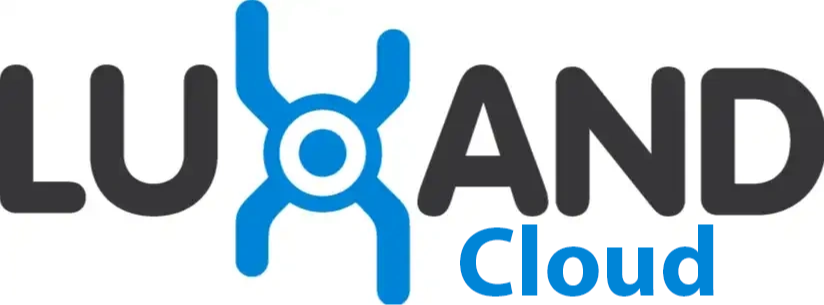
2025 Age Verification Trends: AI, Biometrics, and Digital ID Solutions

As of 2025, age verification is no longer confined to adult websites or liquor sales. It now spans a broad spectrum of industries: social media platforms aiming to protect minors from harmful content, gaming companies enforcing age-appropriate experiences, e-commerce sites selling age-restricted goods, and even educational platforms ensuring regulatory compliance. Governments across the globe are responding to rising concerns around online safety, digital addiction, and data protection by tightening regulations and demanding more robust identity checks.
At the same time, users have grown more privacy-conscious and resistant to outdated or invasive verification methods. The challenge today is clear: how can businesses accurately verify age without compromising user trust, experience, or privacy?
Thanks to rapid innovation in AI, biometrics, and decentralized identity systems, the tools now exist to meet this challenge head-on. In this post, we’ll explore the emerging technologies and key trends that are shaping the future of age verification—making it faster, smarter, and more secure than ever before.
Emerging Technologies in Age Verification
As digital spaces grow more immersive and accessible, verifying a user’s age is no longer just a checkbox exercise—it’s a sophisticated process demanding both precision and privacy. In 2025, new technologies are redefining how age verification is implemented across industries, balancing security with user experience. Here’s a look at the key innovations leading the charge.
AI-Powered Facial Recognition
Facial recognition, once confined to sci-fi films, is now a cornerstone of modern identity verification. In the context of age checks, AI-powered facial analysis can estimate a user's age within seconds by analyzing facial structure, skin texture, and other biometric features. This method is gaining traction in industries like gaming and alcohol delivery, where traditional forms of ID may be unreliable or easily forged. Thanks to advances in deep learning, these systems are becoming more accurate and harder to spoof, while also requiring minimal user input—creating a fast, seamless verification experience.
3D Liveness Detection
One of the biggest challenges in facial recognition is ensuring that the person on the screen is real and present—not a photo or deepfake. That’s where 3D liveness detection comes in. This technology analyzes depth, movement, and subtle micro-expressions to confirm that the user is a live human being. It’s particularly effective at stopping fraud attempts using masks, videos, or AI-generated faces. In age verification, 3D liveness adds a crucial layer of trust, ensuring that automated systems aren’t just identifying a face, but a real person in real time.
Blockchain-Based Identity Systems
Blockchain is making identity verification more transparent and secure. With decentralized identity (DID) frameworks, users can control their own age-related credentials and share them only when necessary. For example, instead of revealing a full government ID to buy a bottle of wine online, a blockchain-based system can confirm the user is over 18 without exposing their name, address, or birthdate. This privacy-preserving approach is gaining interest in sectors where trust and anonymity must go hand-in-hand.
Mobile ID & Government-Issued Digital IDs
Governments around the world are rolling out mobile-based digital IDs that can be stored on smartphones and used across online and offline services. These verified digital identities often include age data and can be integrated directly into apps, websites, and self-service kiosks. By combining the authority of a government-issued credential with the convenience of a mobile device, this method simplifies age checks while reducing the risk of forgery. Adoption is rising fast, especially in regions where digital infrastructure is strong and physical ID cards are fading into the background.
Key Industry Trends in Age Verification
As digital ecosystems expand and regulations tighten, the age verification landscape is undergoing rapid transformation. In 2025, we’re witnessing a shift in how businesses and platforms approach identity validation—favoring methods that are not only more secure but also more user-centric. These emerging trends are reshaping the way companies balance compliance, convenience, and consumer trust.
Shift Toward Passive Verification Methods
Gone are the days when users had to actively upload documents or enter their birthdates repeatedly. The industry is moving toward passive verification techniques—background processes that run silently while maintaining accuracy. These include real-time facial age estimation, device metadata analysis, and behavioral pattern recognition. Passive methods reduce friction, enabling platforms to confirm age without interrupting the user journey. This is especially valuable in mobile-first environments where speed and ease of access are critical.
Cross-Platform and Omnichannel Verification
Today’s users interact with services across multiple touchpoints—apps, websites, kiosks, and even smart TVs. Modern age verification systems are evolving to match this reality, offering consistent experiences regardless of the platform. Omnichannel verification ensures that once a user’s age is confirmed, that information can be securely recognized across all platforms without requiring redundant checks. This approach not only enhances usability but also supports a cohesive, brand-wide compliance strategy.
Integration with Biometric Databases
To improve accuracy and reduce fraud, some systems are beginning to integrate with verified biometric databases—either from government agencies or secure third-party providers. This allows for fast and reliable age verification by matching real-time input (like a selfie or fingerprint) against a trusted record. While still emerging, these integrations promise to raise the bar for identity assurance, particularly in high-risk sectors like online gambling, adult content, and age-restricted e-commerce.
Emphasis on User Consent and Transparency
With growing awareness of digital privacy rights, companies are under pressure to ensure transparency in how age verification is conducted. Users want to know what data is being collected, why, and how it will be used or stored. Modern solutions are prioritizing clear consent flows, privacy-first design, and opt-in mechanisms. Providing users with visibility and control over their data isn't just ethical—it also builds long-term trust and reduces regulatory risk.
Case Studies and Industry Use Cases
The need for reliable age verification spans multiple industries—each with its own risks, regulations, and user expectations. From preventing underage gambling to curating age-appropriate content, the demand for smart, seamless solutions is growing rapidly. Let’s take a closer look at how various sectors are tackling the age verification challenge in 2025.
Online Gaming and Gambling
In the world of online gaming and gambling, age verification isn’t just a regulatory requirement—it’s a safeguard against exploitation and addiction. With the rise of real-money games, loot boxes, and in-game purchases, platforms are under pressure to verify users before they gain access to age-restricted content.
Modern gambling platforms now incorporate AI-driven facial analysis and government-issued digital ID checks during account creation. Some even employ real-time liveness detection before processing large withdrawals to prevent identity fraud. These methods strike a balance between fast onboarding and strict compliance, helping companies maintain trust while avoiding legal pitfalls.
Social Media and Content Platforms
Social networks and video-sharing platforms have become digital playgrounds for users of all ages—but with that freedom comes responsibility. Inappropriate content, targeted ads, and social pressures pose real risks to underage users.
To address this, leading platforms are deploying age estimation algorithms during sign-up and account updates. Some also use behavior-based analytics to flag accounts that may have falsified age details. For example, a platform might request a secondary verification step if an account claiming to belong to a 14-year-old is engaging with 18+ content. These behind-the-scenes technologies aim to create safer environments without disrupting the user experience.
E-Commerce and Age-Restricted Products
From alcohol and vape products to prescription medication and adult merchandise, online retailers are expected to enforce strict age controls. However, clunky ID upload systems often frustrate customers and lead to abandoned carts.
To improve both compliance and conversion rates, many e-commerce businesses are integrating real-time ID verification with facial recognition and mobile government-issued IDs. Some even allow users to store age-verified credentials for future purchases, eliminating repetitive checks. This approach helps retailers meet legal requirements while preserving a smooth and trusted customer journey.
Conclusion
As we look ahead, it’s clear that age verification is evolving into something much more sophisticated than a simple gatekeeping tool. It’s becoming a vital component of digital trust—one that balances regulatory compliance, user privacy, and seamless experience. In 2025, businesses are no longer asking if they should verify age, but how to do it intelligently, ethically, and effectively.
Emerging technologies like AI-powered facial recognition, 3D liveness detection, and decentralized identity systems are helping to make age verification faster, more accurate, and less invasive. At the same time, key industry trends—such as omnichannel integration, passive verification, and transparent consent—are reshaping how verification fits into the user journey.
Ultimately, the future belongs to systems that can prove age without compromising dignity. The goal isn’t just to keep underage users out, but to build digital environments where everyone can interact safely and confidently. Companies that invest in modern, responsible verification today will be the ones that earn trust—and lead the way—tomorrow.
